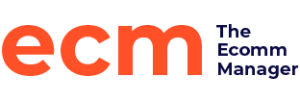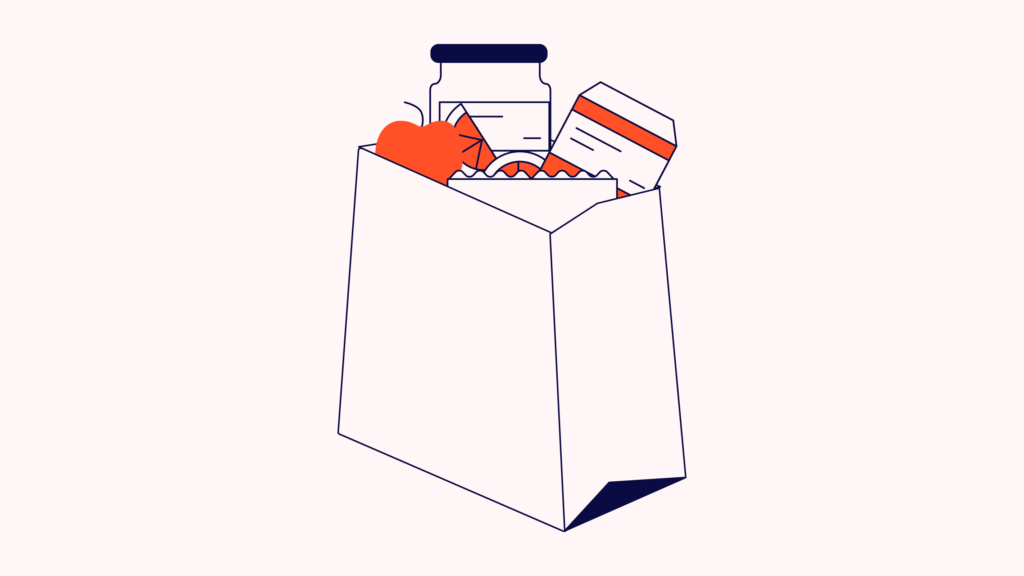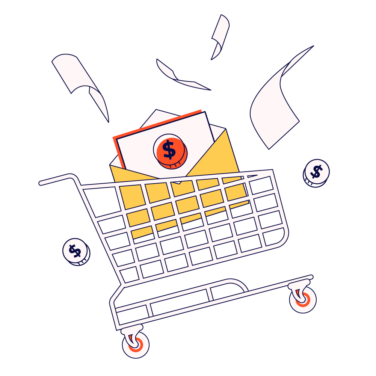The CPG industry has transformed rapidly in the past few years and is showing steady growth thanks to the rise of ecommerce. While major consumer packaged goods companies like Nestle, Procter & Gamble, and Unilever are expanding their ecommerce presence and driving CPG ecommerce trends, smaller consumer brands have also entered the online space—making it more competitive than ever.
Last year, CPG ecommerce sales made up 10% of total CPG sales in the U.S.—and are expected to grow in the coming years. Online CPG sales grew by 30% in 2022 as more consumers turned online to restock easily replenishable items like personal care, food, and cosmetics without leaving their homes.
Customers are now not only looking for quality products with affordable pricing but also new products that can solve everyday problems, customer-centric websites, and, most of all, convenience regarding the overall online shopping experience.
Here are 12 CPG ecommerce trends to watch out for in 2023.
1. Diversifying suppliers to mitigate risk
In a Deloitte survey, 62% of CPG executives believe supply chain issues will continue to be a major challenge in 2023. Although restrictions around the COVID-19 pandemic have loosened in most parts of the world, supply chains still feel the painful after-effects of the lockdowns. Natural disasters caused by climate change can also eliminate crops or valuable raw materials for key CPG products, causing a big headache for manufacturers.
Diversifying your list of suppliers can help you avoid losing out on crucial selling opportunities during key holidays due to a lack of inventory. Rather than dealing with disruptions as they come, adding more backup suppliers to your roster from various parts of the world can help manage the flow of inventory and keep your digital shelves fully stocked during peak periods.
2. Offering multiple types of delivery options
Consumers enjoy having various delivery options to suit their needs and lifestyle. And with consumers being more price sensitive these days, those who can save a few dollars with curbside pickup or BOPIS (buy online and pick up in-store model) will appreciate it.
Coffee brands like Nespresso can deliver to your home or pick up at one of their retail Nespresso boutiques. Those willing to trek to one of their brick-and-mortar stores can save a few dollars from their order. Research has also shown that 17% of customers who pick up in stores add items to their cart and increase their basket size.
Nearly one-third of Americans prefer the BOPIS model since they can purchase online and pick it up in-store. This works well for customers who know what they want to buy and want to do it quickly. They can also save time by not waiting in long lines as stores have a separate counter for pick-up orders.
3. Driving subscriptions for recurring revenue
Subscriptions are an easy sell in the CPG space since these items are quickly used and must be replenished frequently. Passing cost savings and convenience onto the consumer is another major plus.
Let’s have a look at Once Upon a Farm’s ecommerce website. Their direct-to-consumer (DTC) site provides organic baby food products for new parents. Their customers can purchase a pack of their products or start a subscription. Online subscriptions work great for baby products since they are a huge time saver for new parents who are busy around the clock.

Once Upon a Farm uses color blocking on its product page to highlight its subscription call to action. It also offers an attractive incentive: the ability to customize your order which we will get into more in-depth next.
Getting online shoppers to subscribe saves them time in the long run since their purchases are now automated weekly or monthly. It also increases brand loyalty and appeal when products are delivered on time without issues or delays.
Related: Learn more about how to start your own ecommerce subscription model.
4. Offering customization and interactive experiences
It’s common now for a CPG brand to have a website. You’ll need to build custom and interactive experiences to make the purchasing journey more enjoyable and to stand out from competitors in your space.
Healthy high-protein cereal brand Magic Spoon offers a “Build Your Own” option for consumers who want to customize their order. They’ve also taken the user experience on their site to a new level. On this page, users can select a variety of flavors and create a virtual bundle before adding it to their cart. You can easily add or remove items until you’ve built your desired flavors stack.

By making the customization phase interactive, this CPG ecommerce trend not only makes purchasing from Magic Spoon more enjoyable but also makes the experience memorable.
5. Ingredient and brand transparency
When RXBAR did a rebrand a few years ago, it decided to make ingredient transparency the crux of its brand pillars in order to stand out from a crowded and competitive space. Rather than relying on its logo for brand recognition, it identified consumers' need for transparency and emphasized its clean ingredient list.
Rather than hiding their ingredient list in a small indecipherable font (like most protein bars), they instead emphasize the key ingredients in bold letters and the quantity that goes into each bar, making its catchphrase “No B.S.” more impactful.

6. Identifiable product and packaging
Having aesthetic packaging not only makes your product stand out but also makes it more shareable on social media. The viral brand Scrub Daddy creates cleaning supply products that are not only functional but Instagrammable as well. They are easily recognizable on a retail shelf or someone’s kitchen counter.
Their smiley sponges make cleaning more fun and encourage more users to snap a photo or a video during the cleaning process. What other cleaning supply brands can encourage others to do the same?

7. The power of social media—especially TikTok
We’ve discussed the power of #FoodTok and its impact on emerging and established CPG brands. A 15-second influencer video on an innovative cocktail or eye-catching product can quickly go viral and cause your website to be inundated with orders from curious social media users.
When Allison Ellsworth, the founder of prebiotic soda Poppi, went on TikTok to tell the origins of their brand story, the video blew up overnight.
In the video, she talked about how she used to take apple cider vinegar for health benefits but hated the acidic taste. Her audience learned more about Poppi and how it came to be. The storytime video quickly went viral and racked up 51M views, resulting in over $100,000 worth of Amazon orders thanks to their social media strategy.

The brand’s colorful packaging, gut-healthy ingredients, and social media savviness have made it one of the most recognizable prebiotic drink brands.
Related: Check out our round-up of food ecommerce trends.
8. Shoppable recipe ideas
For those in the food and beverage space, allowing customers to view your product as less of a stand-alone item and more as a crucial ingredient to a trending recipe is a great way to get them to add to their cart.
Ecommerce brand Fody offers LOWFODMAP products for consumers looking for gut-friendly meal add-ons. Their salad dressings, pasta sauces, and condiments are vegan, gluten-free, and bloat-free.
Their recipe cards take the guesswork out of meal planning and show how their products can be easily integrated into your next fish taco night or bowl of veggie ramen.

On their recipe pages, you can find all the Fody products you will need to recreate the dish and add it to your cart without leaving the page. Visitors can also print out the recipe to follow along and for online grocery runs.
9. Inclusivity and accessibility are top of mind
Creating CPG products that are inclusive and accessible to the disabled community has been top of mind in recent years as more CPG brands strive to create adaptive products. For people with disabilities, everyday tasks can be a challenge, and brands can help a lot with helping them achieve a sense of independence.
Companies like L’Oreal are taking note and recently launched a motorized lipstick for people with disabilities. The handheld motorized device uses haptic technology to help those with limited hand and arm mobility. It can also assist those who experience hand tremors due to Parkinson’s or cerebral palsy. This robotic arm can make lipstick application more effortless for the millions of consumers who deal with these issues on a daily basis.
The cosmetic brand Rare Beauty also made their range more inclusive by creating disability-friendly products through their thoughtful bottle design. Their blushes and other face products feature a sphere at the top, making it easier to open and close the bottle if you deal with conditions like arthritis.

Making your ecommerce accessible should be top of mind as well. Tools like UserWay and accessiBe make it easier to see what you need to do to make your website ADA and WCAB-compliant. Simply download the tool, and it will quickly scan your site and offer suggestions on making your website more user-friendly for people with disabilities.
10. Access to first-party customer data for personalization
In a 2022 survey, 37% of business owners stated their brand uses first-party data only to build better and more personalized customer experiences, up 6% from last year. With third-party cookies being phased out, collecting customer data via your brand channels is more important than ever to increase conversion rates. More valuable customer information can also help with upselling and retargeting later.
First-party data offers more insights compared to second or third-party data, which can sometimes be unreliable. It provides contextual clues for a customer’s buyer’s journey and allows a brand to understand how a visitor interacts with a site, what product pages they are browsing on, and what’s been left abandoned in their shopping cart.
If your customers enter a product name or issue into your website’s search bar, they may have trouble finding what they are looking for from your top navigation, and the product page needs to be more visible.
If you’re trying to upsell shaving cream with your pack of razors, but no one is increasing their basket size, perhaps customers don’t understand your shaving cream’s unique value proposition compared to other products on the CPG market. You can address issues like these through website design changes and educational copy in your blog or ads to engage your target audience and provide them with a better ecommerce experience.
You can also segment and personalize your messages more effectively. Rather than having your customer information and emails owned by another party, like a grocery chain or Amazon, create your own lead generation forms with questions that help your overall marketing strategy and better serve your customers.
11. Partnerships with a delivery platform like Uber Eats
Many delivery apps have expanded to offer more than takeout, alcohol, and groceries. Items like razors, snacks, and toothbrushes can be found on apps like Uber Eats for those looking to replenish their personal care items without leaving their home.
Drugstore giant Rexall partnered with Uber Eats to offer customers the ability to order beauty products, toiletries, and vitamins easily through the app or go to a pick-up counter in the store.
Native ecommerce brands have also partnered with Uber Eats to make their sparkling water canned beverages available in their Daydream store within the Uber Eats app. Infused with hemp extract and adaptogens, their beverage acts as a mood enhancer that helps destress.

12. Consumer demand drives sustainability efforts
What we consume daily can have a major effect on the environment, and CPG brands are expected to consider that when sourcing, producing, and packaging their products.
Making false sustainability claims can backfire. CPG companies who want to earn the trust of their consumers will make the manufacturing process more transparent and put together reports on the actions they’ve taken to help with environmental causes.
All-natural butter brand Mumgry has made it easy to upcycle their packaging, offering a simple guide on creating your own mini garden with their trio packaging. Customers can grow herbs or succulents using the box packaging or use their individual glass jars as plant pots.

Mumgry also encourages their customers to use the hashtag #MUMGRYMiniGarden as another way to connect with their community and spread their social mission.
There are so many sustainable packaging options, from recycled paper or completely biodegradable materials like mushroom packaging made from hemp hurd and mycelium.
Beyond CPG Ecommerce Trends: Replenish, Restock & Reuse in 2023
These 12 CPG ecommerce trends reveal how much the consumer packaged goods industry has transformed in the past few years. Rather than relying on retail shelf space, ecommerce has become a viable way to grow online sales and have more control over one’s branding and first-party customer data.
Remember to diversify your suppliers to overcome supply chain issues, be authentic and transparent with your customers and use the subscription model to your advantage. Creating the best product is not enough to be competitive.
As customers replenish everyday goods, they will also look for thoughtfully designed products with sustainability in mind. Brands that consider usability, low-waste packaging, and consumer desire for customization will capture customer trust and loyalty for the long term.
Don’t forget to subscribe to The Ecomm Manager newsletter to get more strategic insights for your ecommerce business.
More great ECM content:
- 6 Food Ecommerce Trends To Jump On For Growth
- 6 Grocery Ecommerce Trends To Watch
- 8 Ecommerce Trends Driving The Future Of Online Shopping
- What Is Subscription Ecommerce: Examples, How To Set Up & Top Platforms
- 7 Examples Of Sustainable Ecommerce Packaging & Eco-Friendly Materials
- 10 Best Sustainable Packaging Manufacturers


